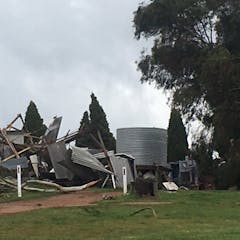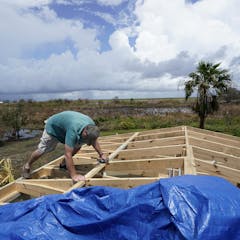
Articles on Disaster preparedness
Displaying 1 - 20 of 51 articles

Governments and the media remain focused on responding to disasters, not preventing or preparing for them. Here’s what must change — and will and won’t work — as Canada faces increased disaster risks.

Whether it’s pamphlets aimed at prevention or text alerts, mass communication is often relied on during disasters. This flawed approach can be improved by engaging meaningfully with communities.

To effectively address climate hazards like wildfire, we must consider the diverse experiences of people, account for longstanding institutions and create processes that empower local people.

There is an alarming lack of disaster preparedness plans in Canada that consider the unique risks and needs of unhoused people during wildfires.

2022 has been Australia’s year of freak floods. Here’s what stricken Victorians are set to experience in the weeks and months ahead.

Framing floods as ‘natural disasters’ deflects from the reality that vulnerability must exist before a crisis can emerge.

Flash flooding can happen in both urban and rural areas, with deadly results in either setting.

Simply providing passive information is not enough. Governments must find better ways to deliver important messages about natural hazards.

Parts of southeast Australia are inundated yet again. Clearly, short-term weather forecasts are not enough to protect communities in times like these.

We can’t prevent natural disasters from happening, but we can be better prepared for when they do.

When researchers look at CCTV footage of how people really react during earthquakes – as opposed to what they report after the fact – it looks like alerts aren’t yet inspiring protective action.

Politicians have more incentive to react to current climate disasters, but more investment is needed in preparing for future problems.

Failures to respond adequately to the floods that hit Germany and Luxembourg in July 2021 must teach us how to prepare for future climate disasters.

While neoliberalism has allowed U.S. markets to grow, the resultant stunted public health system left Americans to figure out how to protect themselves from COVID-19 and its fallout on their own.

Australia has expansive areas of flat land — usually agricultural land — and it’s over these large, flat areas that tornadoes like to form.

Some of the worst risks of earthquakes are in a zone running from the Great Lakes to the St. Lawrence River that includes major cities like Toronto, Ottawa and Québec City.

New research also identified steps people wished they’d taken to prepare for disaster, such as protecting sentimental items, planning a meeting place and better managing stress.

Mitigating climate change is more politically popular than adapting to its inevitable effects.

Federal weather scientists are pushing to make the US more ‘weather-ready,’ which could mean prepping for fires, flooding or storms depending on where you live. The common factor: thinking ahead.

New Zealand’s Alpine Fault has ruptured in a major earthquake on average every 250 years. New research shows a 75% chance of the next one within 50 years, and it’s likely to be magnitude 8 or more.
